Colors in Japanese – A Comprehensive Vocabulary Guide
In this comprehensive guide, we delve into the fascinating world of colors in the Japanese language. Colors play an essential role in any culture, often carrying unique cultural and symbolic meanings. Understanding the Japanese vocabulary for colors not only enriches your language skills but also provides insights into Japanese culture and aesthetics. Let’s embark on this colorful journey through the Japanese language and explore a complete list of useful vocabulary for colors.
Basic Colors
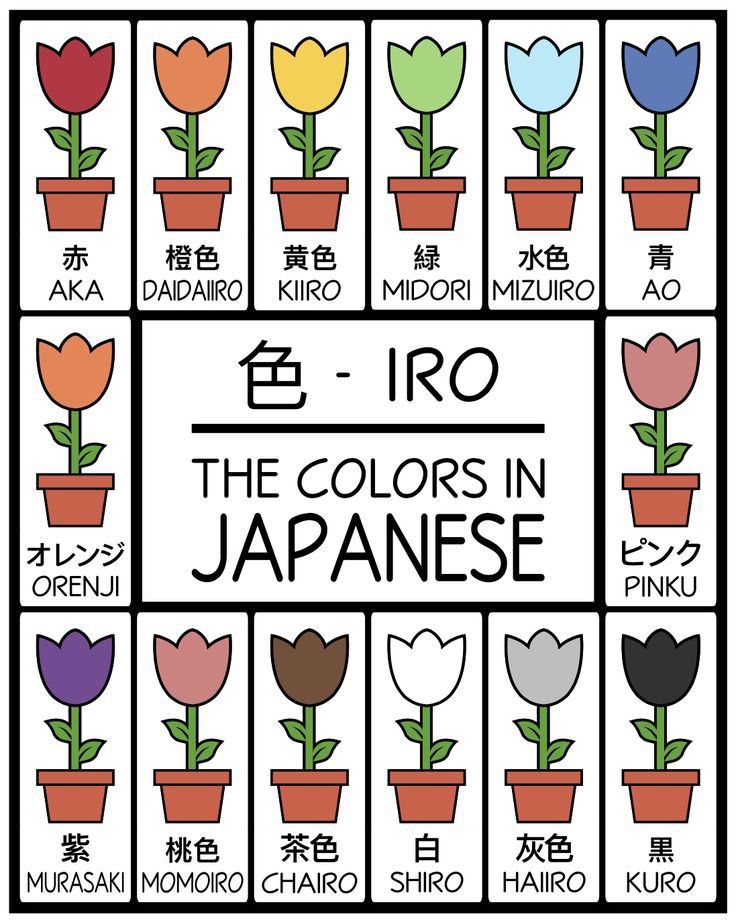
- Red (赤 – Aka): The color red symbolizes passion, love, and energy in Japanese culture. It’s commonly associated with the rising sun and is used in various traditional ceremonies.
- Blue (青 – Ao): Blue signifies calmness, tranquility, and the vastness of the sea and sky. It’s a serene color often used in Japanese art and design.
- Yellow (黄色 – Kiiro): Yellow represents brightness, happiness, and prosperity. It’s associated with the sun and is considered an auspicious color.
- Green (緑 – Midori): Green symbolizes nature, youth, and renewal. It’s the color of lush forests and fresh growth.
- Black (黒 – Kuro): Black represents formality, elegance, and mystery. It’s commonly worn during formal occasions like funerals and is a staple color in traditional clothing.
- White (白 – Shiro): White symbolizes purity, innocence, and simplicity. It’s often used in weddings and religious ceremonies.
- Purple (紫 – Murasaki): Purple is associated with nobility, wealth, and luxury. It’s a color historically reserved for royalty and aristocrats.
- Pink (ピンク – Pinku): Pink signifies love, femininity, and tenderness. It’s a popular color in clothing and accessories.
- Brown (茶色 – Chairo): Brown represents earthiness, stability, and reliability. It’s a color found in traditional Japanese architecture and crafts.
Intermediate Colors
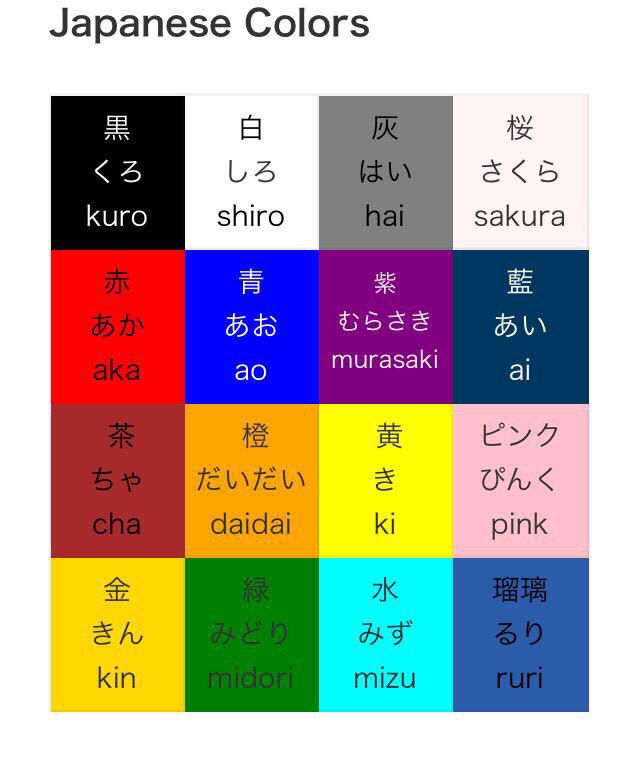
- Orange (オレンジ – Orenji): Orange combines the energy of red and the happiness of yellow. It’s associated with enthusiasm and warmth.
- Gray (灰色 – Haiiro): Gray represents neutrality, balance, and modesty. It’s often used in business settings and formal attire.
- Silver (銀 – Gin): Silver symbolizes purity, wealth, and wisdom. It’s a color that conveys prestige and value.
- Gold (金 – Kin): Gold represents opulence, success, and prosperity. It’s a color associated with celebration and achievement.
- Navy Blue (紺色 – Kon-iro): Navy blue is a darker shade of blue, signifying depth, trustworthiness, and authority. It’s used in uniforms and official emblems.
- Turquoise (ターコイズ – Tākoizu): Turquoise is a vibrant blue-green color associated with the sea and tropical beauty. It conveys a sense of relaxation and escape.
- Indigo (藍色 – Aiiro): Indigo is a deep blue color that symbolizes tradition and craftsmanship. It’s often used in traditional clothing like kimonos.
Advanced Colors
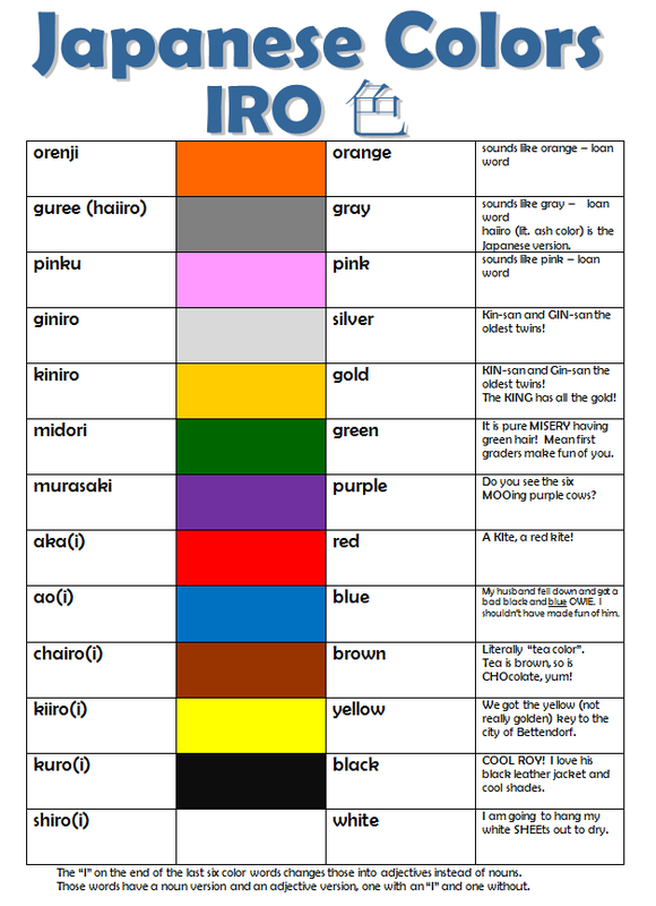
- Crimson (深紅 – Shinku): Crimson is a rich, deep red color that represents passion and intensity. It’s associated with love and desire.
- Olive Green (オリーブグリーン – Orībugurīn): Olive green signifies peace, harmony, and endurance. It’s a color inspired by the olive tree’s leaves.
- Magenta (マゼンタ – Mazenta): Magenta is a vibrant, eye-catching color that symbolizes creativity and individuality. It’s often used in modern design.
- Violet (バイオレット – Baioretto): Violet represents spirituality, mystery, and introspection. It’s a color that encourages self-reflection.
- Teal (ティール – Tīru): Teal is a mix of blue and green, symbolizing clarity, balance, and emotional healing. It’s a color associated with emotional well-being.
Unique and Cultural Colors
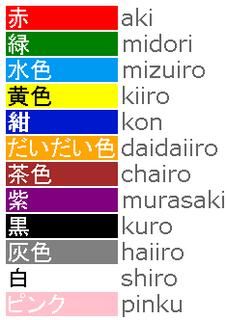
- Sakura Pink (桜色 – Sakurairo): Sakura pink is the delicate pink of cherry blossoms, symbolizing the ephemeral beauty of life.
- Wisteria Purple (藤色 – Fuji-iro): Wisteria purple is inspired by the beautiful wisteria flowers, representing grace and nostalgia.
- Bamboo Green (竹色 – Take-iro): Bamboo green is the color of bamboo leaves, signifying resilience and adaptability.
- Nadeshiko Pink (撫子色 – Nadeshiko-iro): Nadeshiko pink is named after the Dianthus flower and embodies traditional Japanese femininity.
Translating the Passage
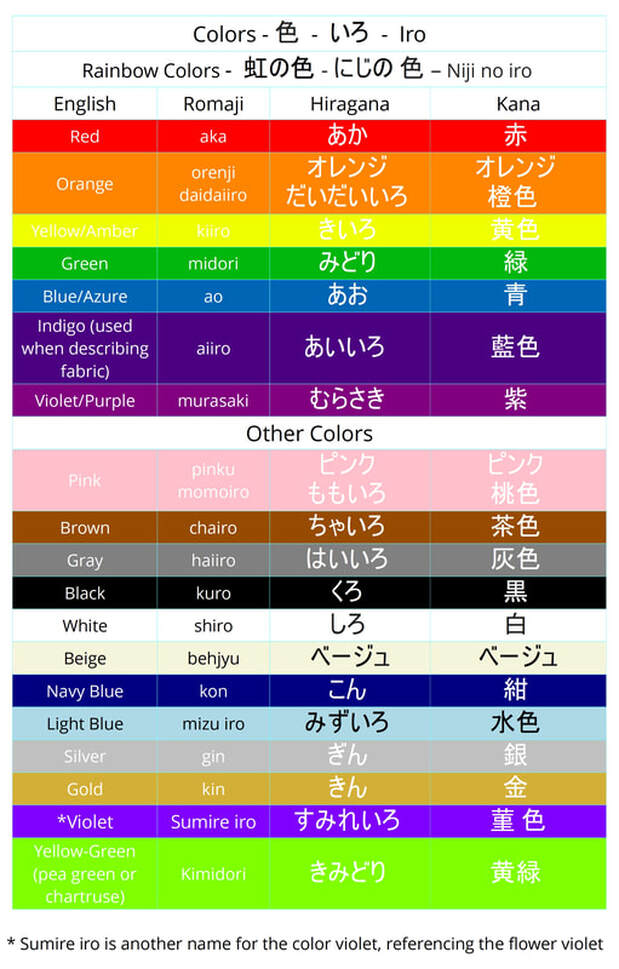
The passage provided in Vietnamese can be translated to English as follows:
“Tourjapanaz.com’s Blog section is a specialized website that provides the latest information on the topic: Colors in Japanese – Complete list of useful vocabulary. Don’t forget to follow Tourjapanaz.com to discover more about Colors in Japanese – Complete list of useful vocabulary.”
Frequently Asked Questions (FAQ)
Q1: What is the significance of colors in Japanese culture?
Colors in Japanese culture carry various symbolic meanings and cultural significance. For example, red symbolizes passion and energy, while white represents purity and simplicity. Understanding these meanings adds depth to communication and appreciation of art and traditions.
Q2: Can you provide more examples of cultural colors in Japanese?
Certainly! Cultural colors in Japanese include Sakura Pink (inspired by cherry blossoms), Wisteria Purple (inspired by wisteria flowers), Bamboo Green (representing resilience), and Nadeshiko Pink (embodying traditional femininity).
Q3: How can I incorporate these color names into my Japanese language learning?
To incorporate these color names into your language learning, create flashcards with the color names in Japanese on one side and their meanings on the other. Practice using them in sentences to reinforce your memory.
Q4: Are there specific occasions where certain colors are preferred in Japan?
Yes, in Japan, certain colors are preferred for specific occasions. For example, white is commonly worn at weddings, while black is worn at funerals. Understanding these customs is important for respecting Japanese traditions.
Q5: Where else can I find information on Japanese culture and language?
In addition to this guide, you can explore books, online courses, and language exchange programs to deepen your understanding of Japanese culture and language. Tourjapanaz.com is also a valuable resource for learning about Japan.
key words
- learn japanese
- how to say hello in japan
- say i love you in japan
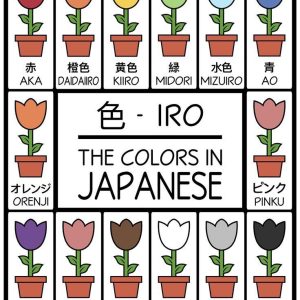
No Responses